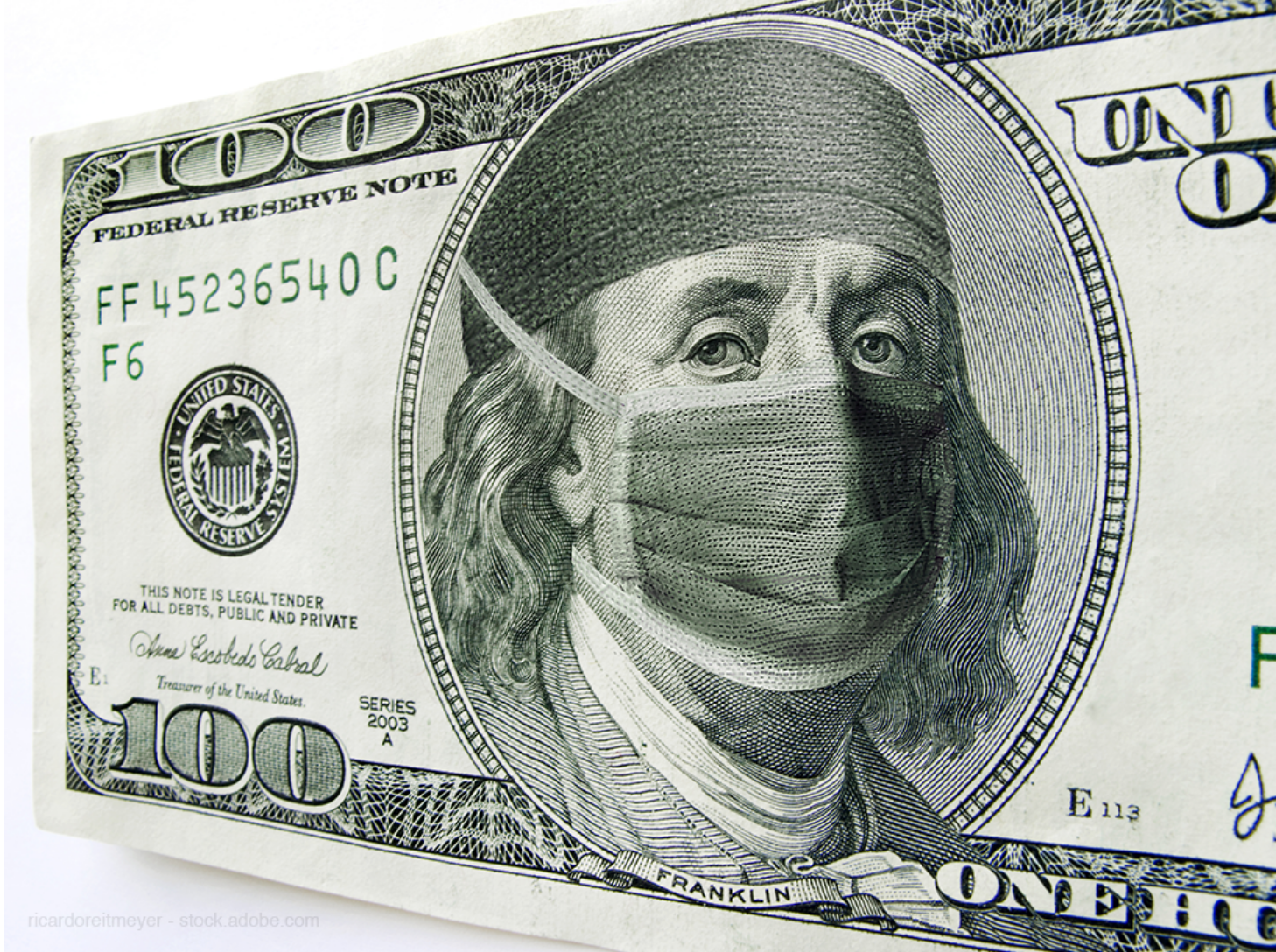Article
How COVID-19 is affecting practices financially
Author(s):
Physicians explain how the coronavirus pandemic is affecting their businesses.

The Medical Group Management Association (MGMA) reported in late April that 97 percent of medical practices have experienced a negative financial impact directly or indirectly related to COVID-19.
This includes a 60 percent decrease in patient volume and a 55 percent decrease in revenue since the beginning of the pandemic, resulting in many practices forced to furlough or layoff staff.
Primary care physicians are experiencing diminished patient volumes which can be detrimental to a private practice that does not have a safety blanket from a large corporate entity and many medical practices are struggling to keep their doors open as volume collapses and money stops coming in.
Elation Health, which has tracked trends for more than 14,000 independent primary care practices during the COVID-19 pandemic, reported the smaller 1-2 prescriber practices are very much in crisis, with a 30 percent decline in charted patient visits that has stabilized but not rebounded.
“These physician practices operate with incredibly thin margins, and they don’t have the cushion to sustain a 10 percent decline in patient volume, let alone 30 percent,” says Kyna Fong, CEO and co-founder of Elation Health. “Meanwhile, practices of over 11 prescribers show more signs of recovery as they switch to virtual care.”
Barry Liberoni, MD, an internist in Bay City, Texas, notes many medical practices, due to COVID-19, are seeing a marked decrease in revenue because patients are fearful of coming into the office for face-to-face visits, whether routine, urgent, or even emergent.
“Our practice quickly turned to telemedicine and remote patient monitoring to provide comprehensive care,” he says. “I believe if you’re not a medical practice that offers remote patient monitoring in combination with telemedicine you’re going to lose your patients and the necessary capital that comes with that to keep your doors open and your staff on payroll during these challenging times.”
Liberoni’s practice made the early decision to enroll its Medicare patients in the 100Plus remote patient monitoring, which enabled the practice to have the tools ready to treat senior patients remotely with real-time data on their pre-existing chronic health conditions, such as hypertension diabetes, and congestive heart failure.
“In addition to being able to keep our patients engaged via remote patient monitoring, our practice was able to earn about $720 per patient per year for each patient who is enrolled in the remote patient monitoring program,” he says. “That additional revenue for our practice contributed to our ability to be able to adapt and overcome during these challenging times while other practices were struggling to stay open.”
Beth Oller, MD, a practicing family physician in Stockton, Kan., notes in the beginning of the crisis, her practice saw numerous patient appointments canceled, which has been difficult to make up financially.
“The transition to telehealth appointments in place of office visits has helped a lot but overall patient volumes still aren’t quite what they used to be as we continue treading in these uncharted waters,” she says. “However, we are lucky where we are in rural Kansas because we aren’t experiencing the huge spikes of COVID-19 cases as other larger cities.”
When the pandemic started, Oller and her husband, who co-owns the practice, decided their top financial priority was making sure their employees were paid.
“While we were able to achieve this, it resulted in us unable to pay ourselves for a period of time,” Oller says. “Today, we are doing okay financially as patients become more open to telehealth appointments.”
Jon M. Regis, MD, president and CEO of Reliance Medical Group in Northfield, N.J., notes as a 23-location multispecialty, mostly primary care practice, there’s been a sharp drop-off in patients.
“I would estimate our revenue has been down 40 to 50 percent since March. It’s been a tremendous hardship,” he says. “However, I believe our practice has the resources to withstand this crisis and even come out of the other side stronger, thanks to some of the steps we’ve taken late last year with a remote patient monitoring and telehealth program for our higher-risk patients with chronic conditions.”
Serendipitously, the practice launched a Virtual Office in 2019 with 10 care managers who remotely monitor more than 600 of its higher-risk patients with diabetes and/or hypertension using a remote patient monitoring solution from CAREMINDr.
“These services, which we can bill for under chronic care management [CCM] codes, have certainly helped offset some of the revenue losses due to COVID-19,” Regis says.
Adjusting to the New Normal
Practices have had to completely shift the way they serve patients-a learning curve for not only doctors but their patients also-and one that not everyone is going to overcome.
“Early on in the COVID-19 crisis, data from our independent primary care practices showed physicians were managing a 60 percent increase in messages from patients; however, they rarely get paid for these touchpoints,” Fong says. “That matches with the recent PCPCC report showing 57 percent of practices identify less than half of their work as reimbursable.”
A primary care physician historically only received $12 for a 20-minute call with a patient, which comes out to $36 per hour. That’s why most don’t even bother charting or billing for it because it costs more to do so than the reimbursement.
“Most physicians don’t even know how to code correctly for the phone call or virtual visit to take advantage of the changes Medicare (and other payers) have made during the pandemic to increase phone call reimbursement and pay for telehealth visits at the same rate as in-person visits,” Fong says.
After running the practice the same way for the past eight years, Oller knew she had to make a lot of adjustments to adapt and continue serving patients.
“Fortunately, we were early adopters of telemedicine services, but in the beginning of the pandemic, we weren’t sure what we were going to be paid for those visits if we were paid at all,” she says. “However, as family physicians we knew it was the right thing to do to ensure our patients received the care they needed, and then worry about the financial aspects as more updates came in.’
Beyond virtual health offerings, the practice altered its in-person visits by offering appointments for healthy patients in the morning, and ill patients in the afternoon. It also assigned designated rooms for well and sick patients in order to reduce potential contaminations and set up a parking lot lobby to reduce interactions from patient to patient.
She’s also done more home visits, though the volume hasn’t made an impact financially.
“When you account for the time to drive out to a home visit and come back, I could see three patients via telemedicine during that time. But that’s not what it’s about,” Oller says. “There are things you do to help your practice financially, and there are things you do because it’s what’s best for your patient. This is one of those things that I do because it’s the best care for my patients.”
Resources for Financial Help
Fortunately, financial support has sprung up on multiple fronts for practices, including CMS’s Advance Payment Program, the CARES Act Provider Relief Fund through HHS, FCC’s COVID-19 Telehealth Program, and SBA’s Payment Protection Program, among others.
“These programs are incredibly beneficial. However, we have to realize that many of these are still loans that the practices still need to recoup revenue to pay off, and others have arduous and complex application processes,” Fong says. “This is challenging as the practices, particularly primary care practices, operate at the limits of the amount of time each physician has in a day.”
Regis notes his was one of the first practices to be approved for CARES Act Provider Relief Fund payments and the Paycheck Protection Program (PPP). He’s also exploring applying for COVID-19 disaster relief funds from New Jersey.
“I encourage practices to seek out and use every loan or grant program available to them,”
he says. “I recognize a lot of smaller practices don’t have staff to jump through all the hoops, but if they have some time right now while seeing fewer patients, I would urge them to explore those programs because it’s worth it.”
Oller’s practice benefitted from the PPP that was part of the CARES act.
“As soon that plan was announced, my husband and I contacted our bank to ensure we took all the proper steps so we could put in an application on Day 1 and quickly receive funds which allowed us to exhale for the first time since the pandemic started,” Oller says. “However, PPP is a onetime infusion of money when we will likely continue to see a decline in patient visits throughout the summer months.”





